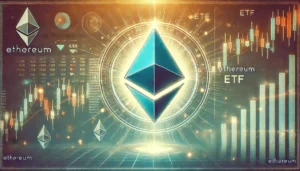Bitcoin Halving ahead
2 min readThe first big event in the Bitcoin universe has already been ticked off this year with the approval of the Bitcoin Spot ETF. Unfortunately, the price of BTC did not develop as many traders had hoped and analysts had predicted. Because instead of an explosive upward price development, the BTC price initially crashed. Now, however, things are looking up again. In the last seven days, the BTC price has increased by around 10% and in the last 24 hours by 0.93%. With all the excitement surrounding the Bitcoin Spot ETF, which is of course a big deal, a second event coming up in 2024 has fallen a little behind: the BTC Halving in April 2024.
Bitcoin Halving Explained – everything you need to know about it
But why is there so much excitement about the Bitcoin halving? To put it bluntly,BTC Halving is initially a simple condition in the BTC protocol. During this process, every 210,000 blocks, the rewards for Bitcoin miners are halved. The event takes place approximately every four years, so the last halving was in 2020. The very last halving is expected to take place in 2140.
The Bitcoin blockchain verifies transactions using the Proof-of-Work consensus mechanism. At the same time, new BTC are created. In the early days, miners received 50 BTC per confirmed or newly created block. At the moment it is 6.25 BTC and after this halving it will be 3.125 BTC. Bitcoin is a deflationary cryptocurrency, the maximum number of BTC is 21 million. So the number of coins that are issued with each confirmed or newly created block must be reduced at certain intervals. As mentioned above, for BTC this reward is halved every 210,0000 blocks. As a rule, this event was always accompanied by a bull market, and it could be that this is only slightly announced.
How does mining work?
Mining works in a very simplified way as follows: In order to verify the transactions or to insert a new block into the blockchain, the miners have to solve complicated algorithmic calculation tasks. Whoever succeeds first gets their turn and receives BTC as a reward. Of course, miners don’t do this with a calculator, paper and pencil, and they no longer do this on their home computers. Rather, this now requires high-performance hardware with the corresponding power consumption. Hence Bitcoin’s reputation as a climate sinner, because some of the data centers are located in countries that are not exactly known for sustainable energy production. An entire industry has now emerged around mining, with a few players holding the reins, which, by the way, does not correspond to Satoshi Nakamoto’s basic idea.






